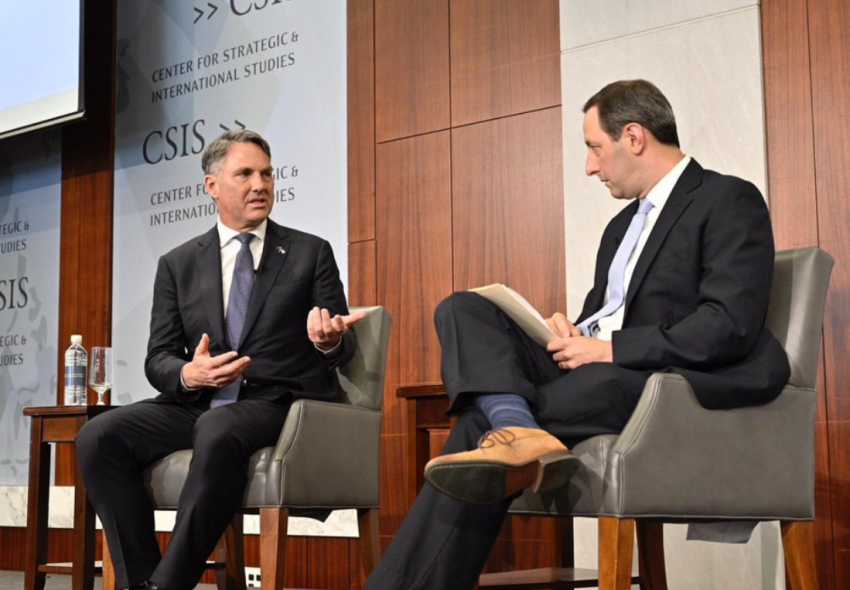
The author of Australia’s Defence White Paper 2000 is sounding the alarm at what he describes as Australia “sleepwalking” into a war with China. Emeritus Professor Hugh White argues in “Sleepwalk to war: Australia’s unthinking alliance with America,” published in Quarterly Essay 86, that “Canberra’s rhetoric helps raise the risk of the worst outcome for Australia: a war between China and America, in which we are likely to be involved”.
Further, he opined: “Over the past decade and without any serious discussion, Australian governments have come to believe that America should go to war with China if necessary to preserve US primacy in Asia, and that Australia should, as a matter of course, go to war with it.”
White has long advocated that Australian governments raise military spending to between 3–4% of gross domestic product (GDP) and for nuclear weapons to become a part of the country’s arsenal. So, it is interesting that even this supporter of greater military spending is registering alarm at the Australian government’s course.
Minister for Defence Richard Marles made it clear that whatever happens in the Asia-Pacific region, Australia will remain a loyal ally to the United States. He did it again in a speech to the Centre for Strategic and International Studies (CSIS) on July 12.
CSIS describes its role as defining “the future of national security” and helping “inform decision making of key policymakers and the thinking of key influencers”.
Marles needs no influencing, as was clear from his unambiguous speech. He called for closer cooperation with the US to reverse what he described as “a catastrophic failure of deterrence” in the Indo-Pacific. The Australia-US alliance, he said, “affords Australia capability, technology, and intelligence advantages we could not acquire or develop on our own” and it cannot afford to “stand still”.
Marles also said while the US could rely on Australian support for its military build-up, the new Labor government would also do its “share”. Australia “will make the investment necessary to increase the range and lethality of the Australian Defence Force (ADF) so that it is able to hold potential adversary — forces and infrastructure — at risk further from Australia”.
This would include “long-range strike weapons, cyber capabilities and area-denial systems tailored to a broader range of threats, including preventing coercive or gray-zone activities from escalating into conventional conflict”.
“We will invest in the logistics, sustainment and depth required for high-intensity and high-end warfighting, including guided munitions. And this will, in turn, require deeper engagement with industry to accelerate capability development and strengthen our supply chains.
“The Albanese government has committed to ensuring funding certainty for this pathway, and I have commissioned a force posture review for delivery early next year which will determine how best to structure the ADF assets and personnel for this goal as well as how we best integrate and operate with the United States and other key partners.”
Marles, like his colleagues, sees no contradiction in the term “defence” being used in the same sentence with “threatening infrastructure”. He repeats that this is a necessary response to China’s military build-up.
China has been spending significantly on its military since World War II, but its arms build up appears to be defensive. Total spending on its armed forces for the year is estimated at US$293 billion. By contrast, the US has a military budget of US$770 billion. In China, 1% of GDP goes to the military. The same figure for the US is 3.7%.
Evolving the US Base Structure in the Indo-Pacific, a Brookings Institution report in 2020, argued that then-US President Barack Obama’s target of basing 60% of total US naval and air force capacity in the Indo-Pacific was “sufficient for now”. The Donald Trump administration sought to “maintain US strategic primacy in the IndoPacific region”.
The Joe Biden administration’s “Indo-Pacific Strategy”, released in February, states: “[W]e will renew our focus on innovation to ensure the US military can operate in rapidly evolving threat environments, including space, cyberspace, and critical- and emerging technology areas. We are developing new concepts of operations, building more resilient command and control, increasing the scope and complexity of our joint exercises and operations, and pursuing diverse force-posture opportunities that will strengthen our ability to operate forward and more flexibly with allies and partners.”
Marles, an ever willing pro-US warrior, has even been praised by former conservative Prime Minister Tony Abbott, who said on July 12 he was impressed with how Labor is “very much continuing the line of the former government when it comes to Australia’s defence and strategic policy”.
The media is taking its role seriously too — to build a sense of common cause in Australia’s anti-China campaign. It is showing that both major parties share one perspective and speak with one voice. It is both true and dangerous.
White’s line that the world is somehow “sleepwalking” into war is absurd. His inference that wars are accidental, rather than the result of political and economic policy, is just as absurd.